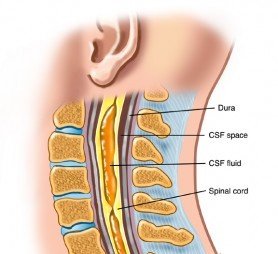VATER syndrome
VATER syndrome
VATER Syndrome, now more commonly referred to as VACTERL Association, is a complex congenital condition involving multiple organ systems. The name is an acronym reflecting the core anomalies typically present in affected infants: V – Vertebral anomalies A – Anal atresia C – Cardiac defects TE – Tracheo-Esophageal fistula R – Renal (kidney) anomalies L – Limb abnormalities Children with this condition often require early surgical interventions, long-term monitoring, and coordinated multidisciplinary care to manage complications. In Bangladesh, where prenatal screening and neonatal diagnostic capabilities are still developing, VATER Syndrome is often diagnosed late or partially, leading to preventable morbidity if not managed by experienced specialists. Dr. Md. Nafaur Rahman, Assistant Professor of Pediatric Neurosurgery at the National Institute of Neurosciences & Hospital (NINS&H) and Chief Consultant at Bangladesh Paediatric Neurocare Centre, collaborates closely with pediatric surgeons, cardiologists, nephrologists, and neonatologists to provide comprehensive care for children diagnosed with VACTERL Association, particularly those with vertebral and spinal anomalies. 🧠 What Is VATER Syndrome or VACTERL Association? VACTERL Association is not a single disease but a non-random constellation of congenital malformations that affect structures arising from the embryonic mesoderm. For a diagnosis, at least three of the anomalies listed in the acronym must be present in the child. Though its exact cause remains unknown, it is believed to be due to disruptions in early embryonic development, possibly influenced by genetic, environmental, or vascular factors. 📊 Core Features of VACTERL Syndrome in Bangladeshi Children Vertebral anomalies Hemivertebrae Butterfly vertebrae Fused or missing vertebrae Scoliosis or kyphosis (spinal curvature) Tethered cord syndrome (may lead to walking difficulty, bladder/bowel dysfunction) Anal atresia (imperforate anus) Often diagnosed at birth due to absent anal opening Requires surgical correction (e.g., posterior sagittal anorectoplasty - PSARP) Cardiac defects Ventricular septal defect (VSD), atrial septal defect (ASD), Tetralogy of Fallot Detected by echocardiography, may need open-heart surgery Tracheo-Esophageal fistula (TEF) and/or Esophageal atresia Causes feeding difficulty, aspiration pneumonia in newborns Requires emergency neonatal surgery Renal anomalies Single kidney, duplex system, hydronephrosis Detected by abdominal ultrasound or renal scan Limb abnormalities Radial aplasia, thumb anomalies, extra digits May affect upper or lower limbs and require orthopedic care 🏥 Diagnosis of VATER Syndrome in Bangladesh Due to limited prenatal anomaly scans and poor access to neonatal intensive care units (NICUs) in rural Bangladesh, many cases are diagnosed after birth or during early infancy. Diagnostic tools used by Dr. Nafaur Rahman and his team include: Spine X-rays and whole-spine MRI (to assess vertebral and spinal cord anomalies) Abdominal ultrasound (for renal and genitourinary anomalies) Echocardiography (for congenital heart disease) Contrast studies (for suspected TEF or esophageal atresia) Genetic testing and karyotyping (if syndromic features are suspected) Multidisciplinary evaluation is essential and now available in Dhaka’s leading tertiary care hospitals. ⚕️ Treatment Approach for VACTERL Association in Bangladesh Management is individualized based on the specific anomalies present in each child. Many children will require multiple surgeries, NICU care, and developmental follow-up. ✅ Key Interventions: Neurosurgical correction of spinal cord tethering or deformities (by Dr. Nafaur Rahman) Pediatric surgical repair of anorectal malformations Cardiac surgery for structural heart defects Urologic surgery for renal tract anomalies Orthopedic interventions for limb deformities Speech, occupational, and physical therapy Early diagnosis and staged interventions can dramatically improve quality of life and functional outcomes for these children. 🌈 Long-Term Outcomes and Quality of Life Children with VATER syndrome, with proper care, can: Walk, attend school, and live independently Undergo successful continence training post-anorectal surgery Recover from cardiac defects post-repair Lead full lives with regular medical follow-up However, neurological symptoms due to vertebral or spinal cord anomalies, if untreated, may cause irreversible motor or bladder dysfunction. This is where timely pediatric neurosurgical intervention is critical. 👨⚕️ Why Choose Dr. Md. Nafaur Rahman for VATER Syndrome Care in Bangladesh? 🎓 Assistant Professor, Pediatric Neurosurgery, NINS&H 🏥 Chief Consultant, Bangladesh Paediatric Neurocare Centre 🧠 Expert in congenital spinal anomalies, tethered cord, hemivertebrae, and scoliosis 🛠️ Collaborates with pediatric surgeons, urologists, and cardiologists for comprehensive care 🇧🇩 Committed to providing affordable, ethical, and world-class treatment for children from all regions of Bangladesh 🌍 Caring for Children Nationwide Children with VACTERL anomalies from Dhaka, Sylhet, Rajshahi, Chattogram, Khulna, Mymensingh, Barisal, and remote rural areas are regularly referred to Dr. Nafaur Rahman for spinal and neurological evaluation. His clinics accept direct referrals, including from NICUs, pediatricians, and government hospitals. 📞 For Appointments and Surgical Consultation 📱 Serial/Booking: 📞 +8801912988182 📞 +8801607033535 🌐 Website: www.neurosurgeonnafaur.com 📍 Clinic Locations: National Institute of Neurosciences & Hospital, Dhaka Bangladesh Paediatric Neurocare Centre, Dhaka












